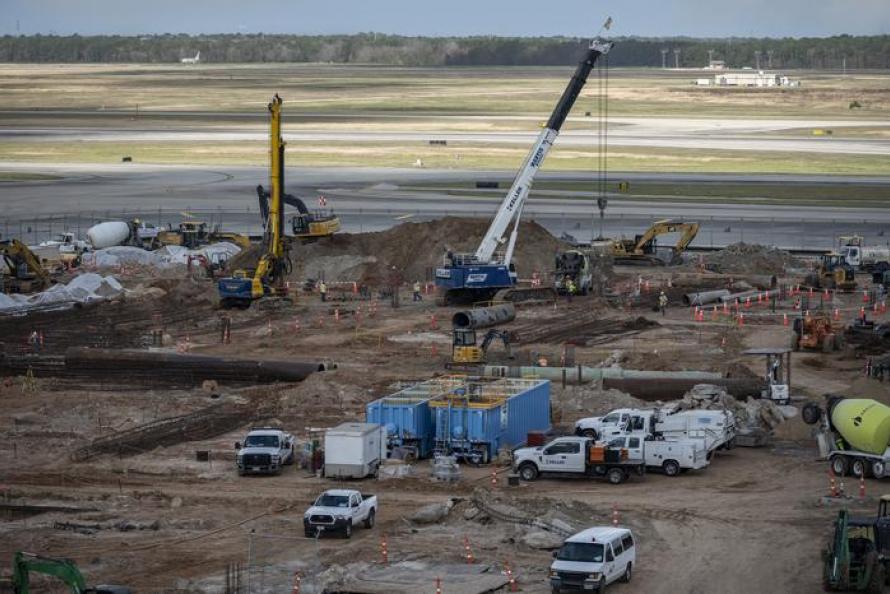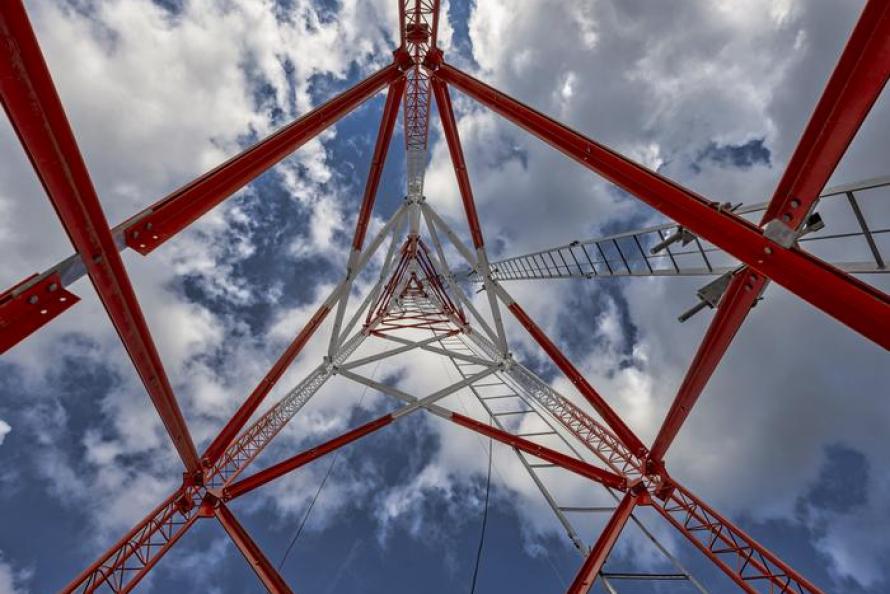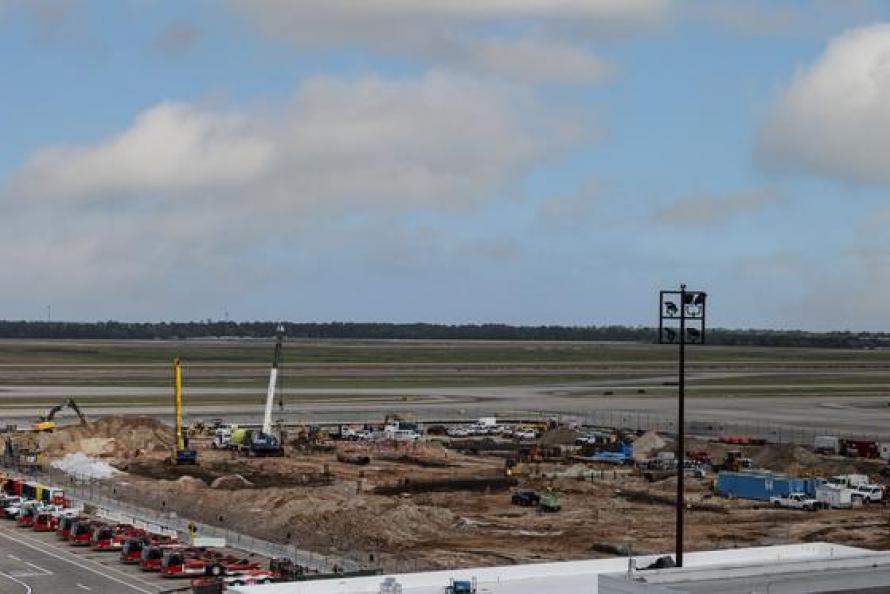Holiday travelers at George Bush Intercontinental Airport are getting a bird’s eye view of the future of air travel through the airport’s IAH Terminal Redevelopment Program, ITRP: cranes, drilling rigs, welding machines, forklifts, front-end loaders and more are taking off every day under the control of dozens of workers adorned with hard hats and colorful vests at multiple sites, advancing the Program.
ITRP will provide tremendous economic growth, and environmental and social benefits, to Houston’s traveling public and residents. ITRP is on track to deliver within the $1.3 billion budget established in 2019 and on time with substantial completion landing in 2024.
The new international terminal complex will accommodate operations for 15+ foreign flag airlines and United Airlines’ international service. New gates will accommodate international growth from the ever-increasing local and traveling passenger demand and meet the needs of our air carriers’ increase in flights - all while greatly improving the customer experience. The completion of ITRP will deliver all new facilities and refresh aged spaces allowing Bush Airport to maintain world-class service and continue to be highly competitive with airports of similar size.
Prior to ITRP, minor cosmetic improvements had been made to Terminal D, which serviced international flights since its opening in 1990, while the passenger traffic has almost quadrupled in those two-decades-plus (prior to the COVID-19 pandemic). Terminal D is at capacity during peak hours and typically exceeds capacity in the busiest travel weeks of the year.
ITRP is the single-largest capital development program that the city has invested in at Bush Airport since the airport was constructed and opened in 1969, according to Houston Airports Deputy Director of Infrastructure and Chief Development Officer Jarrett Simmons.
Simmons said that ITRP underwent a rigorous and thorough design phase. Project stakeholders had a vision for how Terminal D and the new Mickey Leland International Terminal (MLIT) would look in the end. Finalizing the design was no simple task and went through multiple iterations “to get it right.”
“We fully recognize and gladly accept that a program of this magnitude invites a lot of scrutiny,” Simmons added. “Our Director, Mario Diaz, has been insistent upon transparency from the start and we have several mechanisms in place to assist the City and the public in keeping the Program accountable.”
The City of Houston Controller has audited the ITRP twice, in June 2020 and June 2021, using a highly regarded external accounting firm, BDO. The BDO auditor stated, “BDO found ITRP appears to run a very tight ship.” In addition, the BDO auditor commended ITRP as being in the top 5% of programs audited by their organization.
HAS leadership also meets quarterly with the FAA to discuss airport business, including ITRP, and provides quarterly ITRP updates to the Houston City Council’s Economic Development Committee. Attendance includes Diaz, ITRP Executive Program Manager Steven Andersen, Chief Financial Officer J’Maine Chubb and other members of HAS Senior Staff.
“The ITRP is being built in a live operational environment and certainly that comes with inherent challenges,” Andersen continued. “And we are doing everything we can to minimize construction impacts through signage, adjusted work schedules, and other means.”
“ITRP remains fully committed to setting a new bar for customer service and the passenger experience at Bush Airport,” Andersen said. “The progress we have made over the past year is tremendous and the benefits will be phenomenal. It is a complicated process, and it is difficult to invest over a billion dollars in a live operational area without disruption – but the end result will yield tremendous dividends to our citizens.”
The ITRP has logged well over two million man-hours on the Program and boasts an enviable safety record. Since Program inception in 2015, there have been no lost-time incidents, which are defined as recordable incidents where workers are given a restriction from working for a period of time beyond the day of the incident.
“We continue to be vigilant in ensuring the health, safety and security of the traveling public and one another. That is our highest priority,” Andersen said. “A truly successful program is not just on time and within budget, but also keeps people safe at all times.”
“I couldn’t be prouder of the program team, designers and contractors we have on the ITRP.”
“With the help of so many partners – United, our foreign flag carriers, the contracting community, Mayor Turner, Council members and City officials, and the local community - the ITRP will make Houston even more of a global player than it is now,” Simmons said. “The Program is transformative and will give our residents and our visitors the world-class facilities they expect and deserve.”
In 2019, Houston Airports served an all-time high of 45.2 million passengers, including 11.1 million international passengers. In spite of the challenges of the COVID-19 pandemic, Bush Airport served more than 18 million passengers in 2020 that included 3.6 million international passengers. Houston Airports’ recovery as a global air service gateway is well underway with passenger traffic steadily on the rise.
With each new milestone in the Program, Andersen said that Houston Airports is drawing closer to dramatically improving the customer experience and the City of Houston’s reputation as a gateway city. Projected future milestones include:
-
MLIT North Concourse – May 2023
-
New Baggage Screening Building – June 2023
-
New D West Pier – September 2023
-
Federal Inspection Services building modifications – August 2024
-
New International Terminal – June 2024
The ITRP started in 2015 with a series of enabling projects and advanced significantly in 2020 by closing and demolishing the existing Pier Old C North in order to make room for the expansion of MLIT with a new Pier D West and the new International Central Processor. Once complete, the terminal central processor will house ticketing counters, baggage claims, and a 17-lane security checkpoint that will be one of the largest in the country. Attached to MLIT will be a new concourse, replacing the old concourse with updated facilities where travelers can board their planes, relax in modern lounges, or explore a multiplicity of dining options.
The ITRP is positioned to bring international business and construction jobs to Houston – harbingers of economic growth for an airport system which is already a major economic engine for the country’s fourth-largest city.
“It is also important to note, “Simmons said, “that the ITRP is primarily funded through the airport system’s Enterprise Fund, which is independent from the city’s budget and not funded through taxes from local homeowners. It is funded by airline fees, bonds and concession fees, subject of course to City Council approval.”
“We believe the City of Houston will derive a great sense of pride from the completed ITRP,” Simmons said. “The new facilities were designed to represent the very best of this city and will serve in many respects as a bridge – we want Houston Airports to be 5-star caliber, the best in the world, and ITRP without question brings us closer to that goal.”



